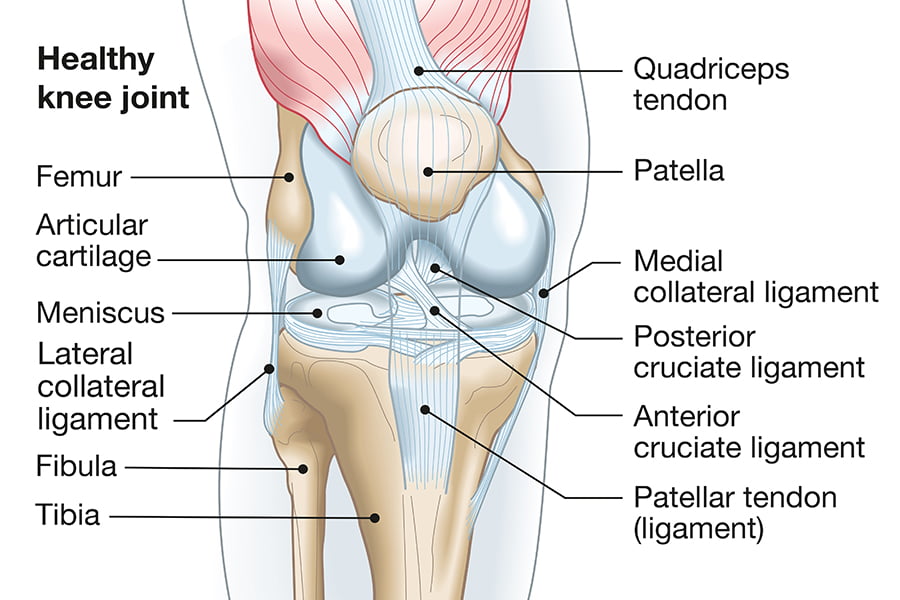
Posterior cruciate ligament injuries (PCL) are one of the less commonly injured ligaments of the knee. Understanding this injury and developing new treatments for it have lagged behind the other cruciate ligament in the knee, the anterior cruciate ligament (ACL), probably because there are far fewer posterior cruciate ligament injuries than ACL injuries.
Ligaments are tough bands of tissue that connect the ends of bones. The PCL is located near the back of the knee joint. It attaches to the back of the femur (thighbone) and the back of the tibia (shinbone) behind the ACL.
The PCL is the primary stabilizer of the knee and the main controller of how far backward the tibia moves under the femur.
The PCL is made of two thick bands of tissue bundled together. One part of the ligament tightens when the knee is bent; the other part tightens as the knee straightens. This is why posterior cruciate ligament injuries often occur along with the ACL when the knee is forced to straighten too far or hyperextend.
The most common way for the PCL alone to be injured is from a direct blow to the front of the knee while the knee is bent. Posterior cruciate ligament injuries often occur during an auto accident or when someone falls on a bent knee.
The pain and moderate swelling from posterior cruciate ligament injuries will usually be gone after two to four weeks, but the knee may still feel unstable. The symptoms of instability and the inability to trust the knee for support are what require treatment. Also important in the treatment decision is the growing realization by orthopedic surgeons that long-term instability leads to early arthritis of the knee.
PCL injuries are diagnosed primarily through history and physical examination. X-rays may be ordered to rule out a knee fracture, but tendon and ligament damage does not show up on X-rays. So, an MRI may be ordered. An arthroscopy may be needed to make a definitive diagnosis.
Initial treatment for a PCL injury focuses on decreasing pain and swelling in the knee. Rest and mild pain medications, such as acetaminophen, can help decrease these symptoms. Less severe PCL tears are usually treated with a progressive rehabilitation program. Most patients receive physical therapy treatments after a PCL injury. Therapists treat swelling and pain with the use of ice, electrical stimulation, and rest periods with your leg supported in elevation.
For more information on this subject, call The Zehr Center for Orthopaedics at 239-596-0100 or visit www.zehrcenter.com. The information contained herein is compiled from a variety of sources. It may not be complete or timely. It does not cover all diseases, physical conditions, ailments, or treatments. The information should NOT be used in place of a visit with your healthcare provider, nor should you disregard the advice of your health care provider because of any information you read on this topic.